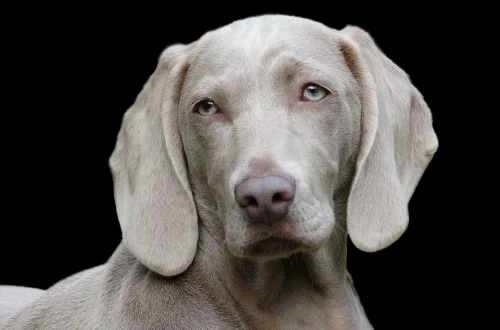
Exploring Grass Alternatives for Dogs: Eco-Friendly Options for Your Pet
As dog owners become increasingly aware of their environmental impact, the quest for eco-friendly alternatives to traditional grass surfaces is gaining traction. Conventional lawns, while aesthetically pleasing, come with a host of concerns ranging from excessive water usage to chemical fertilizers and pesticides that can be harmful to both pets and the planet. In this context, exploring grass alternatives for dogs presents an exciting opportunity to create a pet-friendly environment that is also sustainable.
The push towards greener living has led to innovative solutions that not only cater to the needs of our canine companions but also align with eco-conscious practices. These alternatives can transform outdoor spaces into functional areas that support the health and happiness of dogs while minimizing harm to the environment. As we delve into the various options available, it’s essential to consider factors such as durability, maintenance, and the overall impact on your dog’s well-being.
With a range of choices available, dog owners can make informed decisions that contribute to a healthier planet. From synthetic grass to natural ground covers, the possibilities are vast and varied. Let’s explore some of these exciting alternatives and discover how they can enhance your dog’s outdoor experience while being kind to the Earth.
Artificial Turf: A Durable Solution
Artificial turf has emerged as a popular choice among dog owners looking for a low-maintenance, durable alternative to natural grass. This synthetic grass mimics the look and feel of real turf while offering a range of benefits that make it an appealing option for pet owners. One of the primary advantages is its resilience; artificial turf can withstand heavy foot traffic and rough play, making it ideal for energetic dogs.
Maintenance is another significant factor that makes artificial turf a favorable choice. Unlike traditional grass that requires regular mowing, watering, and fertilizing, synthetic surfaces are virtually maintenance-free. A simple rinse with water can help keep it clean, and specialized infill materials can help control odors and enhance drainage. This convenience is particularly beneficial for busy dog owners who may not have the time or resources to maintain a natural lawn.
Moreover, artificial turf is designed to be pet-friendly. Many high-quality options are made from non-toxic materials, ensuring that your furry friend can play safely without the risk of exposure to harmful chemicals. Additionally, synthetic grass is resistant to pests such as fleas and ticks, providing an added layer of protection for your pet.
However, it’s essential to consider the climate when opting for artificial turf. In hotter regions, the surface can become quite warm, potentially affecting your dog’s comfort while playing. Ensuring adequate ventilation and providing shaded areas can help mitigate this issue. Overall, artificial turf offers a practical and environmentally friendly solution for dog owners seeking a grass alternative that combines durability with ease of care.
Natural Ground Covers: A Green Alternative
For those who prefer a more organic approach, natural ground covers provide an excellent alternative to traditional grass. These low-growing plants can create a lush, inviting space for dogs to explore while offering various environmental benefits. Options such as clover, thyme, and moss are not only aesthetically pleasing but also eco-friendly choices that require minimal maintenance.
Clover, for instance, is an excellent ground cover that thrives in various conditions, including partial shade. It has natural nitrogen-fixing properties, which can enrich the soil without the need for chemical fertilizers. Clover is also soft underfoot, providing a comfortable surface for dogs to play on. Additionally, its ability to withstand foot traffic makes it a durable option for active pets.
Thyme is another fantastic choice for dog owners seeking a low-maintenance ground cover. This aromatic herb is resilient, drought-tolerant, and can handle heavy foot traffic. Thyme also attracts beneficial pollinators, contributing to a more vibrant ecosystem in your yard. Its natural scent can even help repel certain pests, providing a safer environment for your pet.
Moss is an alternative that thrives in shady areas, making it ideal for yards with limited sunlight. It requires minimal upkeep and offers a soft, cushiony surface for dogs to lounge on. Moss is also a natural water filter, helping to manage rainwater runoff and reduce erosion, making it a fantastic choice for eco-conscious homeowners.
Choosing natural ground covers not only benefits your dog’s play experience but also contributes positively to the environment. These options enhance biodiversity, reduce the need for chemical interventions, and promote a healthier ecosystem in your outdoor spaces.
Mulch and Gravel: Practical Solutions for Pet Owners
For pet owners looking for practical and functional outdoor surfaces, mulch and gravel can serve as excellent alternatives to grass. Both materials offer unique features that cater to the needs of dogs while providing an eco-friendly solution for landscaping.
Mulch, particularly wood or rubber mulch, can create a soft and safe surface for dogs to play on. It provides cushioning, which can be beneficial for older dogs or those with joint issues. Moreover, mulch helps retain soil moisture and suppress weeds, reducing the need for chemical herbicides. When choosing mulch, it’s essential to select non-toxic options, as some types of wood mulch can be harmful if ingested.
Rubber mulch, made from recycled tires, is an innovative choice that offers durability and cushioning. It doesn’t decompose like wood mulch, meaning it requires less frequent replacement. Rubber mulch also drains well, preventing muddy areas and odors that can occur with other materials. This makes it an excellent option for dog owners concerned about maintaining a clean and hygienic outdoor space.
On the other hand, gravel is a practical choice that is easy to maintain and provides excellent drainage. It can be used in combination with other landscaping elements to create designated areas for dogs to play. Different sizes and colors of gravel can enhance the aesthetic appeal of your yard while providing a safe surface for pets. However, it’s crucial to monitor your dog’s behavior around gravel, as some dogs may be prone to chewing on or swallowing small stones.
Both mulch and gravel can be integrated into your yard design in various ways. They can define play areas, pathways, or borders, allowing for a functional yet visually appealing outdoor space for your pets. By selecting these practical materials, dog owners can create a safe and enjoyable environment that aligns with eco-friendly principles.
Conclusion: Making Informed Choices for Your Pet’s Environment
As the focus on sustainability and eco-friendliness continues to grow, exploring grass alternatives for dogs becomes not only a practical consideration but also a moral one. Each option discussed—artificial turf, natural ground covers, mulch, and gravel—offers unique benefits that cater to the needs of both dogs and their owners.
When making a choice, it’s essential to consider factors such as maintenance requirements, durability, and the overall impact on your pet’s well-being. By opting for eco-friendly alternatives, dog owners can create an inviting and functional outdoor space while contributing to a healthier planet.
Ultimately, your decision should reflect your values as a pet owner and your commitment to sustainability. Whether you choose artificial turf for its durability, natural ground covers for their environmental benefits, or practical mulch and gravel solutions, you can create a pet-friendly environment that is both enjoyable for your dog and kind to the Earth.
*This article is for informational purposes only and should not be considered medical advice. For any health concerns regarding your pet, please consult a veterinarian.*




